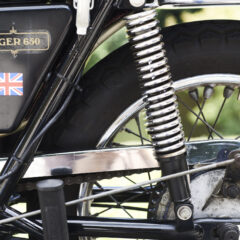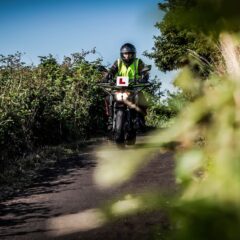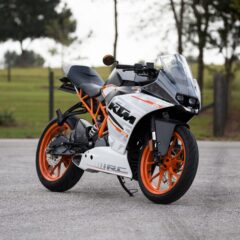
7 Top Motorcycle Accessories
With Christmas just around the corner, you might be wondering what to get your favourite motorcycle enthusiast or even a little something for yoursel...
 Phoenix Motorcycle Training LTD
Phoenix Motorcycle Training LTD
 Phoenix Motorcycle Training LTD
Phoenix Motorcycle Training LTD

So, you’ve just gotten your CBT motorcycle certificate. Congratulations! You’re well on the way with your beginner motorcycle journey. Now you may be thinking about the next steps to a UK motorcycle license. Once you have your CBT, there are several routes you can take to further your freedom on the road.
Some riders are happy to stick with their scooter or 125cc motorcycle. If this is you, you’ll be fine with your CBT certificate. This lets you ride on all UK roads — aside from motorways. If you want to carry a pillion passenger, you’ll need to level up your motorcycle license. It’s the same story if you have your eye on a higher-powered motorbike.
Read on to find out more about what happens after you receive your CBT motorcycle certificate in the UK.
Compulsory Basic Training (CBT) is a legal requirement for anyone who wants to ride a motorbike in the UK. This first step to riding a motorcycle involves comprehensive instruction from a DVSA-qualified instructor.
The only person who can award you with a CBT certificate is a DVSA-approved motorcycle training instructor who’s passed the CBT instructor training. That instructor must work through an Approved Training Body (ATB) like Phoenix Motorcycle Training. Approved instructors tailor your training to build the necessary skills for riding safely on the road. You’ll also practice your riding skills before being assessed for the DL196 CBT certificate.
Once you have received your CBT motorcycle certificate in the UK, you can legally ride a motorcycle up to 125cc. You’ll need to show L-plates for two years, but there’s no need for further qualifications or tests. Unless of course, you wish to ride larger bikes or remove your L-plates. In that case, you’ll need to take further tests for a motorcycle license that’s right for your age group.
To ride a motorcycle or scooter with a more powerful engine than 125ccs, you’ll need an A2 motorcycle license or higher.
Each of the motorcycle licence levels comes with age and power restrictions. For instance, if you’re 21 years old, the highest-powered motorbike your can ride is 600ccs. For that, you’ll need an A2 motorcycle licence and training that prepares you for the licencing test. If you want to ride a 750cc bike, you’ll need a full A-level motorcycle licence and be 24 years of age or older.
The age and power restrictions for motorcycle licenses are best explained with a chart. The chart below details the age range, bike type and associated licences.
Licence Type | Minimum Age | Size of training bike | Licence requirements | Size of bike you can ride after passing training |
CBT | 16 | Up to 125cc | Provisional or full UK driving licence | 16 y.o – 50cc 17 y.o + up to 125cc |
| AM | 16+ | 50cc | Compulsory Basic Training (CBT), theory test, practical test on an all powered 2-wheeled moped. | 50cc |
| A1 | 17 to 19+ | 125cc | Compulsory Basic Training (CBT), theory test, practical test | 125cc |
| A2 | 19 to 24+ | 500cc | Theory and practical test (CBT must have already been obtained to complete these tests) or 2 years experience on A1 motorbike and a practical test | 35Kw (approx. 550 – 600cc) |
| A (full, unrestricted motorcycle licence) | 24 + (or after holding an A2 licence for a minimum of 2 years) | 600 cc | CBT, theory and practical test at 24 years of age or older, or hold an A2 licence for a minimum of 2 years and pass a practical test at age 21 or older | Any sized bike |
The Direct Access Scheme provides full-licence training for the highest level licence you’re able to get for your age group.
Your CBT certificate, or DL196, allows you to legally ride a motorcycle or scooter that’s up to 125ccs on UK roads. You won’t be allowed to carry a pillion passenger or travel on motorways. And you’ll need to display L plates on your bike.
You don’t have to train and gain your motorcycle licence if you don’t want to. The CBT certificate is valid for two years. You can re-qualify for the DL196 as many times as you like without moving up the motorcycle licencing ladder. Many scooter couriers and delivery people are happy to keep their CBT certification without training for higher-level licences, and it is completely legal for them to do so.
However, if you do want to travel on motorways, take passengers or ride a more powerful machine, you’ll need to gain a higher level licence. The fastest way to do this is to take full licence training through the Direct Access Scheme. This lets you train on a higher-powered bike and test for the highest-level motorcycle license you can gain for your age.
This could be an A1, A2 or A licence, it’s largely dependent on your age. There is no specification as to how long you need to hold your CBT certification either. So it is possible to gain your CBT certification one month and gain a higher level licence the next. It depends on the individual, the kind of motorcycle they want to ride, where they want to ride and the confidence they have on two wheels.
Some people who learn to ride at a young age will move through all the various levels of motorcycle licenses as they get older. Others may choose to ride a 125cc motorbike for 2 years, train for their A2 licence and stick with this. And others, may move up from an A2 licence to a full, unrestricted A motorcycle license when they find a superbike they want to ride.
There is no right and wrong path to gaining your motorcycle license. What’s most important is choosing the right licence for your riding needs. Getting your CBT certificate is just the first step on the path towards becoming a fully qualified rider in the UK. However, there is no rule stating you have to take further steps.
With your CBT certification under your belt, you can feel confident riding around with L-plates and practising safe riding techniques. If ever you feel it’s time for more advanced qualifications or tests the easiest way to gain a higher level licence is through the direct access scheme (DAS).
If you’d like to ride a motorcycle or scooter on UK roads, get in touch with us today to discuss the best options for you!

With Christmas just around the corner, you might be wondering what to get your favourite motorcycle enthusiast or even a little something for yoursel...

If you love motorcycle riding, you’ve probably daydreamed about riding a motorbike for a living. A professional racer or stunt rider is OK for some...

Getting a UK motorcycle licence can seem a complicated process. Particularly when compared to a driving licence for a car. Whether you choose the pro...
This website uses cookies to personalise content, ads, and analyse traffic, sharing data with partners who may combine it with other information. See our Privacy Policy for more information.